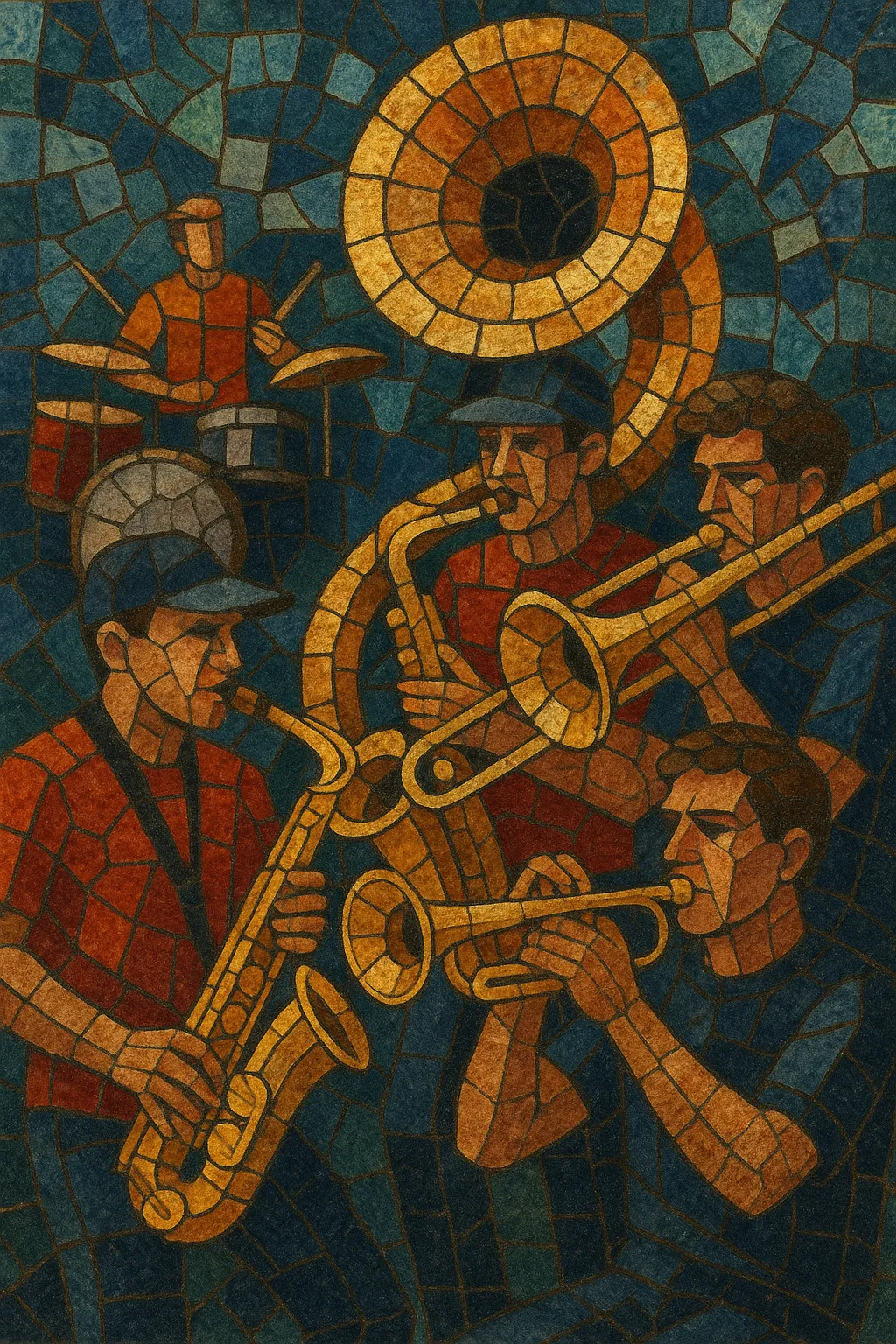Pep band is a spirited, small-to-medium wind and percussion ensemble tradition that performs at sporting events, pep rallies, and campus functions to energize the crowd and support the home team.
Drawing from marching band, concert band, big band jazz, rock, pop, and funk repertoires, pep bands play short, high-impact arrangements—fight songs, stadium anthems, and chart-topping hits—optimized for volume, clarity, and crowd participation. Typical instrumentation features trumpets, trombones, saxophones, mellophones or horns, sousaphones/tubas, and a drum set with auxiliary percussion; some ensembles add electric bass or guitar for extra punch.
Arrangements emphasize strong groove, unison hooks, call-and-response figures, sharp rhythmic hits, and chantable motifs. Pieces are often condensed to 60–90 seconds, stay in brass-friendly keys, and sit mostly in 4/4 (or 2/4) at driving tempos suited to timeouts and in-game breaks.
Pep band grew out of American school and collegiate band culture. Marching bands and concert bands had been fixtures of U.S. campuses since the late 19th and early 20th centuries, providing music for ceremonies, football halftimes, and pep rallies. The idea of a smaller, more mobile ensemble dedicated to indoor sports (notably basketball and hockey) emerged as schools sought a compact group that could deliver the same energy in tighter venues.
By the 1970s, as arena rock, funk, disco, and later pop and hip hop defined stadium soundtracks, pep bands adopted and arranged these hits for brass, reeds, and drum set. Short, high-octane charts—punchy fanfares, chantable riffs, and rhythmic “stabs”—became the norm, timed to game stoppages. College fight songs remained core repertoire, but contemporary crowd-pleasers helped cement pep band as a distinct performance practice separate from outdoor marching traditions.
With the growth of collegiate athletics and fan engagement, pep bands became institutionalized across universities and high schools. Publishers and arrangers created standardized “timeout charts,” and ensembles expanded stylistically to include pop, hip hop, EDM-inspired grooves, and classic soul/funk throwbacks. Today, pep band functions as a flexible ensemble model—part marching lineage, part jazz/big-band sensibility—built to project excitement, lead chants, and amplify the home venue’s atmosphere.


